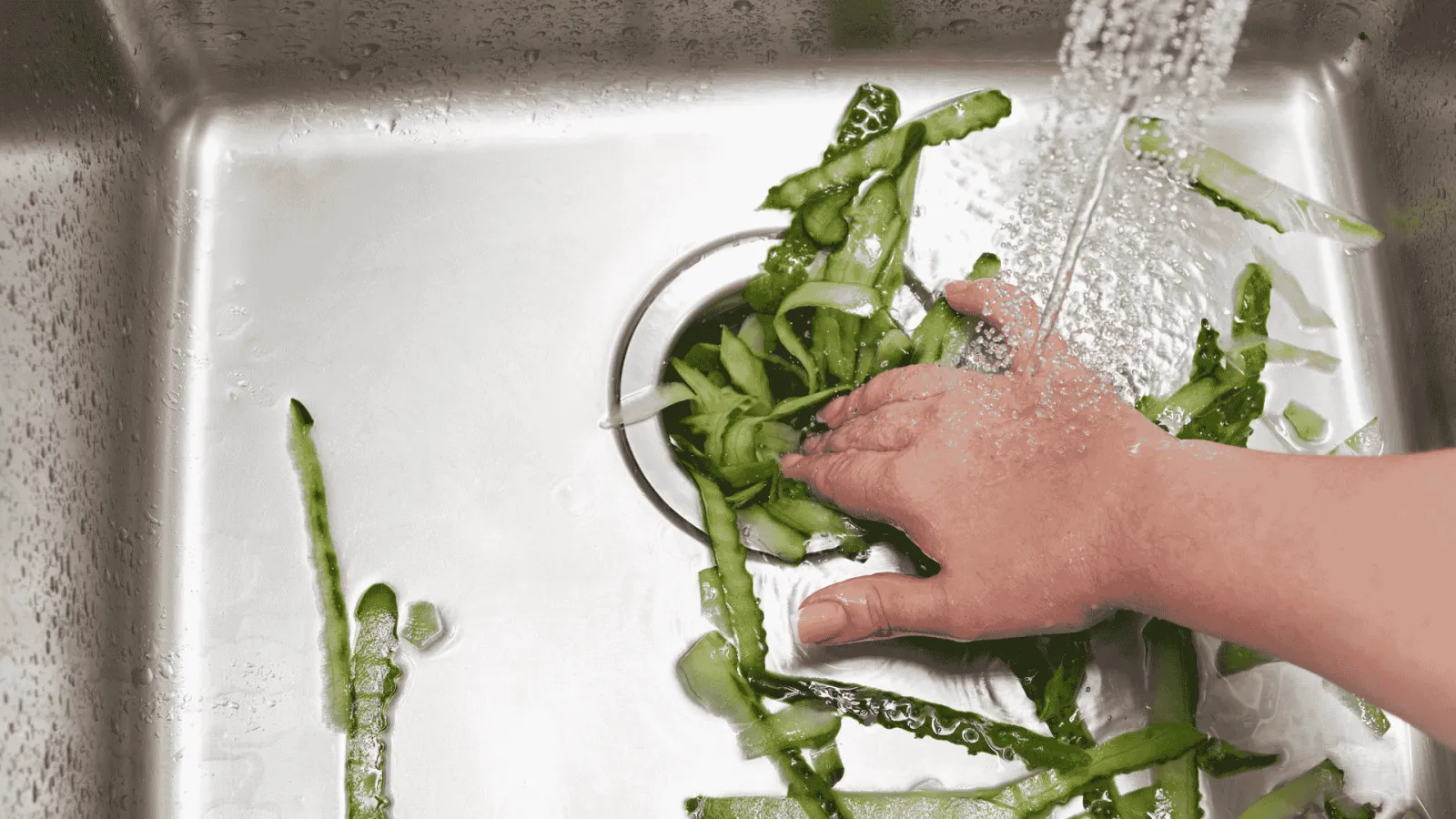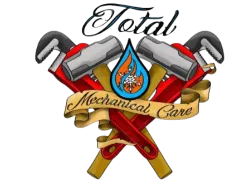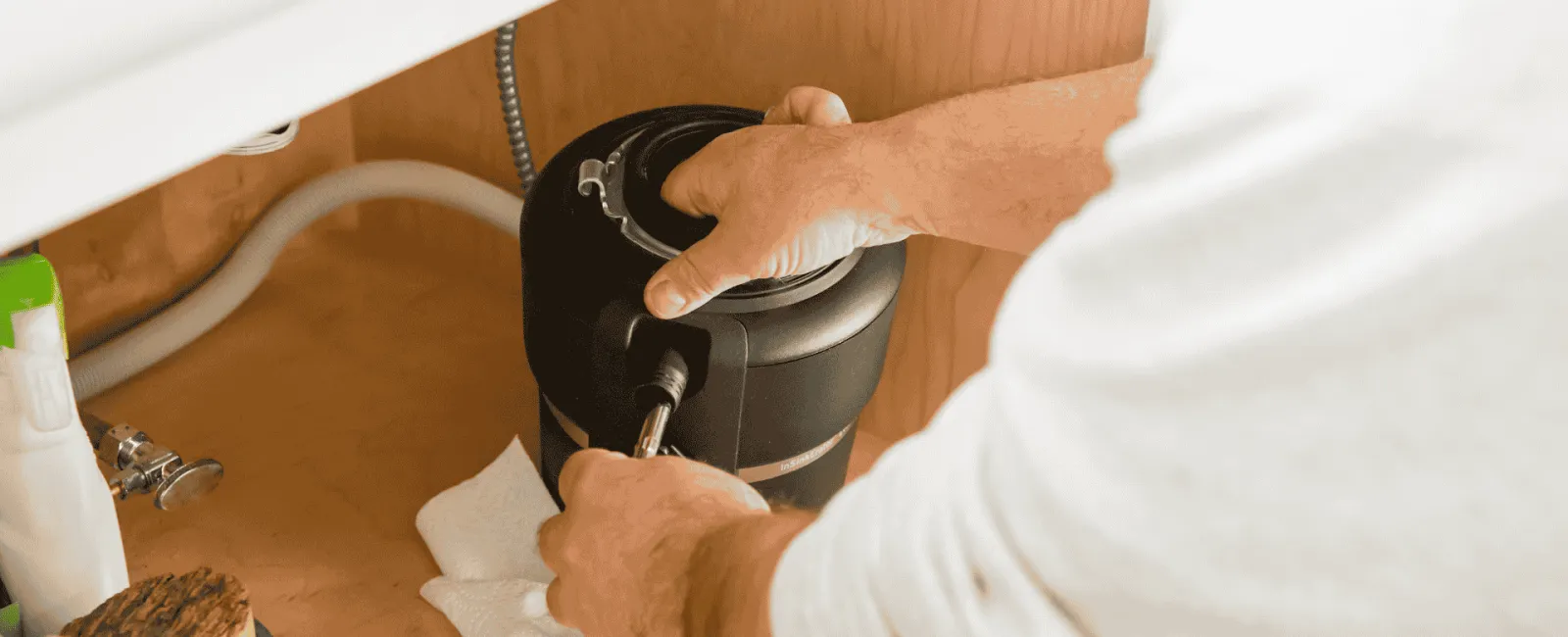November 07, 2025
You flip the switch to your garbage disposal and hear it humming, but nothing is happening. That humming sound can cause some unwanted frustration, especially if your garbage disposal has caused problems in the past.

A garbage disposal not working is one of the most common kitchen plumbing problems. The good news? Most disposal issues have simple fixes you can handle yourself in just a few minutes. The key is understanding what's causing the problem.
At Total Mechanical Care, we've been helping families solve plumbing problems for generations. Before you call a plumber or start shopping for a replacement, let's walk through the five most common reasons your garbage disposal stopped working and how to fix each one.
Safety First
Before troubleshooting, always follow these safety rules: turn off the power at the circuit breaker, never put your hand inside the disposal, use long-handled tools like pliers or tongs, and wait for the motor to cool completely before touching the unit.
1. The Disposal Is Jammed
This is the number one reason garbage disposals stop working. Something hard got stuck between the impeller blades and the grind ring. The motor attempts to spin but is unable to do so. That's the humming sound you hear.
Common culprits include bones, fruit pits, utensils that fell down the drain, broken glass, and twist ties.
How to fix it: Turn off the power at the breaker. Look underneath your sink and find the hex-shaped hole in the center of the bottom plate. Insert a 1/4-inch Allen wrench into this hole. Turn it back and forth until the blades move freely. Use a flashlight to look down into the disposal from above, then use pliers or tongs to remove the obstruction. Run cold water, turn the power back on, press the reset button, and test.
If you can't get the blades to turn or the disposal keeps jamming, a professional plumbing repair can diagnose whether the disposal needs to be replaced.
2. The Motor Overheated
When the motor overheats, a thermal overload switch trips and shuts everything down. This prevents the motor from burning out. When this happens, your disposal won't turn on at all. No sound, no movement, nothing.
Motors overheat when you run the disposal too long without a break, try to grind something too hard, or the disposal struggles with a partial jam. Sometimes older disposals overheat because the motor is no longer as efficient.
How to fix it: Wait at least 15 minutes for the motor to cool. Look under your sink at the bottom of the disposal and find the small red or black reset button. Press it firmly until you hear a click. Turn the power back on and test the system. If the reset button keeps popping out after cooling, the motor may be failing.
3. There's No Power to the Disposal
Sometimes the disposal is completely dead. You flip the switch and nothing happens. No humming, no sound, no movement.
This happens if the disposal came unplugged under the sink, the circuit breaker tripped, the wall switch failed, or internal wiring came loose.
How to fix it: Check that the disposal is plugged in securely under the sink. Check your home's electrical panel and reset the kitchen breaker if needed. Flip the wall switch several times to test if it's worn out. Press the reset button on the disposal bottom even if you don't think it tripped.
If none of these steps restore power, a professional diagnosis can determine if the disposal's internal wiring or motor failed.
4. The Disposal Leaks Water
A leaking disposal means water is dripping or spraying from somewhere it shouldn't. Leaks most commonly happen at the sink flange, the dishwasher connection, or the drain pipe connection.
Leaks develop when rubber seals deteriorate, mounting bolts loosen, or connections aren't properly tightened during installation. Sometimes the disposal housing itself cracks.
How to fix it: Identify the source of the leak. Dry everything under the sink, run water, and watch where the water appears. If the leak is at the sink flange, you'll need to reseal the connection. For dishwasher connection leaks, tighten the hose clamp or replace the rubber gasket. For drain pipe leaks, tighten the slip nut or replace the gasket.
If the disposal housing is cracked, replacement is the only option. Our plumbing installation team can replace a disposal in approximately an hour, ensuring proper connections are made.
5. The Blades Won't Grind Properly
Sometimes a disposal turns on and makes grinding sounds, but it's not working effectively. Food sits in the disposal instead of being ground up. Water drains slowly.
This means the impeller blades are damaged, worn down, or corroded. After years of grinding food waste, the metal edges become dull. Corrosion can erode the blades. Previous jams may have bent or broken the impellers.
What to do: You can't sharpen or replace the blades in a garbage disposal. The impeller assembly is permanently attached to the motor shaft. Try cleaning the disposal thoroughly by pouring ice cubes and rock salt into it and running it with cold water. This acts as an abrasive to clean the blades.
If cleaning doesn't help, the disposal has reached the end of its useful life. Most disposals last 10 to 15 years. Replacing an old disposal with a new model means better grinding power, quieter operation, and improved reliability.
When to Call a Professional
Many garbage disposal problems are simple enough to fix on your own. But some situations require professional help.
Call a professional if:
- You've tried the fixes above, and the disposal still doesn't work
- The disposal is leaking, and you can't identify the source
- You're uncomfortable working with electrical components
- The disposal needs removal and reinstallation
- You need a new disposal installed
- The disposal frequently jams or needs repeated resets
- Your disposal is more than 12 years old and is having problems
Professional plumbing repair services have the tools and experience to diagnose disposal problems quickly and determine whether repair or replacement makes more sense.
Preventing Future Problems
Once your disposal is working again, these habits prevent future issues:
Run cold water: Always use cold water when running the disposal. Cold water solidifies grease, making it easier to grind and flush away.
Grind in small amounts: Don't overload the disposal. Gradually feed food waste while running cold water.
Avoid problem foods: Never put bones, fruit pits, coffee grounds, eggshells, fibrous vegetables, pasta, rice, or grease down your disposal.
Clean regularly: Once a week, grind ice cubes and citrus peels to clean the blades and eliminate odors. Monthly, pour baking soda and vinegar into the disposal, let it sit for a few minutes, then flush with cold water.
Get Expert Help When You Need It
At Total Mechanical Care, we believe homeowners should understand their plumbing systems. These five troubleshooting steps typically resolve most garbage disposal issues. But we also know that not every repair is straightforward.
Our licensed plumbers handle garbage disposal repairs and replacements daily. We diagnose the exact problem, clearly explain your options, and complete the work efficiently. Whether you need a simple repair or a complete replacement, we use high-quality parts and proper installation techniques.
Every job is guided by integrity, craftsmanship, and a commitment to getting it done right. We provide flat-rate pricing with no surprises, no hidden fees, and no last-minute markups. You get a detailed estimate before any work begins, and we back every job with our 100% satisfaction guarantee.
Don't let a broken garbage disposal disrupt your kitchen routine. Contact us at Total Mechanical Care. We're here to get your kitchen back to normal quickly and correctly.
Need Garbage Disposal Repair or Replacement?
Our licensed plumbers diagnose and fix disposal problems fast. Available 24/7 for plumbing emergencies. Serving Cumming, Alpharetta, Roswell, and surrounding communities. Contact us for all your plumbing repair and installation needs.




